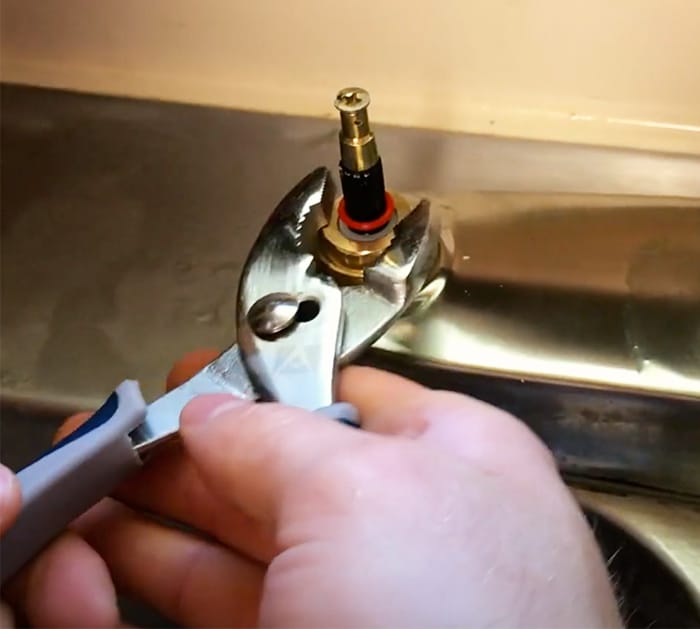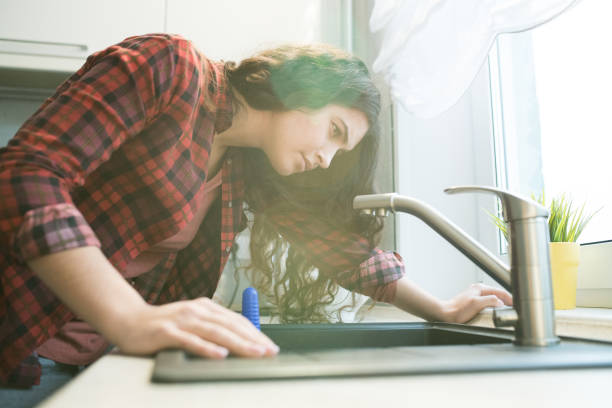This post listed below in relation to Water Dripping from Faucet: Why and How to Fix is highly attention-grabbing. Have a go and make your own personal final thoughts.

Leaking faucets could appear like a minor inconvenience, yet their effect surpasses just the annoyance of the noise. From wasting water to sustaining unnecessary monetary costs and health and wellness threats, neglecting a trickling faucet can bring about various repercussions. In this write-up, we'll delve into why it's vital to address this usual home issue without delay and efficiently.
Wastage of Water
Environmental Effect
Leaking faucets contribute significantly to water wastefulness. According to the Epa (EPA), a single faucet leaking at one drip per secondly can waste greater than 3,000 gallons of water per year. This not only pressures water sources but additionally affects environments and wild animals dependent on them.
Financial Expenses
Raised Water Costs
Beyond the environmental effect, trickling taps can inflate water bills significantly. The collected waste with time converts right into greater energy expenditures, which can have been stayed clear of with prompt fixings.
Prospective Building Damages
Additionally, extended dripping can lead to damage to fixtures and surface areas surrounding the faucet. Water buildup can trigger staining, deterioration, and even structural concerns if left ignored, resulting in added repair service costs.
Wellness Concerns
Mold And Mildew and Mildew Development
The constant presence of moisture from a dripping faucet develops an ideal environment for mold and mildew and mold growth. These fungi not only endanger interior air high quality however also pose wellness threats, especially for individuals with respiratory problems or allergies.
Waterborne Conditions
Stationary water in dripping taps can end up being a breeding ground for microorganisms and other pathogens, boosting the risk of waterborne conditions. Pollutants such as Legionella microorganisms flourish in stationary water, potentially causing serious health problems when ingested or inhaled.
Do it yourself vs. Professional Repair service
Advantages and disadvantages of Do It Yourself Repair
While some may try to deal with a dripping faucet themselves, do it yourself repairs feature their very own set of obstacles. Without correct expertise and tools, DIY attempts can aggravate the problem or bring about insufficient repairs, extending the trouble.
Advantages of Hiring an Expert Plumber
Employing a specialist plumber ensures that the underlying reason for the leaking tap is resolved effectively. Plumbers have the proficiency and equipment to diagnose and repair faucet concerns effectively, saving time and reducing the risk of further damages.
Step-by-Step Overview to Taking Care Of a Dripping Faucet
Tools Called for
Prior to attempting to fix a trickling tap, gather the required devices, consisting of an adjustable wrench, screwdrivers, substitute parts (such as washing machines or cartridges), and plumber's tape.
Typical Faucet Issues and Their Solutions
Recognize the type of tap and the specific problem causing the drip. Typical problems include damaged washers, rusty valve seats, or damaged O-rings. Refer to maker guidelines or online tutorials for step-by-step guidance on repair work.
Safety nets
Normal Upkeep Tips
To prevent dripping faucets, carry out regular upkeep such as cleansing aerators, evaluating for leakages, and changing damaged components promptly. In addition, take into consideration mounting water-saving tools or updating to extra reliable components.
Value of Prompt Fixes
Attending to leaking faucets as quickly as they're seen stops additional water wastage and potential damages, inevitably saving both water and money in the future.
Effect On Residential Property Value
Perception of Well-Maintained Residential Property
Maintaining a building in good condition, including resolving upkeep concerns like trickling faucets, improves its viewed worth and value among possible purchasers or renters.
Influence on Resale Value
Characteristics with well-kept plumbing components, consisting of taps, command higher resale worths in the realty market. Attending to leaking faucets can contribute to a favorable perception during residential or commercial property examinations and arrangements.
Ecological Responsibility
Private Payment to Conservation
Taking responsibility for repairing trickling faucets lines up with more comprehensive initiatives toward water conservation and environmental sustainability. Every person's activities jointly make a significant impact on preserving precious sources.
Lasting Living Practices
By focusing on punctual repairs and adopting water-saving habits, individuals add to lasting living techniques that profit both present and future generations.
Verdict
Resolving a trickling tap surpasses plain comfort; it's a necessary step toward preserving water, minimizing financial prices, and guarding health and wellness and residential or commercial property. Whether through do it yourself repair work or specialist aid, acting to fix leaking faucets is a tiny yet impactful way to advertise responsible stewardship of resources and add to a healthier, a lot more sustainable future.
How to Fix a Leaky Faucet: Step-by-Step Repair Guide
A leaky faucet may seem like a simple annoyance, but if it's not fixed promptly, that leak could cost hundreds to potentially thousands. From water damage to mold, mildew, and high water bills, even a tiny leak can be catastrophic if left unattended. Damage like this can even affect the overall value of your home, so it's important to take the right approach for leaky faucet repair. You may need the help of a plumber in some cases, but we've got a few tips you can try on how to fix a leaky faucet before calling the pros.
Four Faucet Types
When you're learning how to fix a leaky faucet, the first step is knowing what kind of faucet you're working with! There are four common types.
Cartridge Faucets
Cartridge faucets come in one- or two-handled varieties. In one-handled cartridge faucets, hot and cold water combines in a single cartridge. In the two-handled versions, hot and cold water are controlled separately and mixed in the faucet.
Ball Faucets
Ball faucets have a single lever you push up and down to adjust the pressure and rotate to change the temperature. A slotted metal ball controls the amount of water allowed into the spout.
Compression Washer Faucets
They're the oldest type of faucet, but they're still used in many homes — especially older ones. Compression faucets have two separate handles that, when turned, raise or lower the washer that seals a water valve. This valve stops water from flowing through the faucet when it is turned off.
Disc Faucets
Disc faucets rarely need to be repaired due to their maintenance-free design. The water flow is controlled by two discs — the upper one raises and lowers against a fixed lower disc, creating a watertight seal. If your disc faucet starts leaking, you may need to replace the seals or clean residue buildup from the inlets.
Fixing a Leaky Faucet
Step 1: Turn Off the Water
Whether you're learning how to fix a leaky bathtub faucet or how to fix a leaky kitchen faucet, always turn off the water supply to your working area when you're fixing a leak. The last thing you want is a flood added to your list of things to fix.
Look for the shutoff valves below your sink or around the tub and turn them clockwise to stop the water flow. If your faucet doesn't have shutoff valves, you may need to turn off the water for the whole house. Check to make sure it's off by turning the faucet on. If nothing comes out, you're ready to start the repair.
Step 2: Take Apart the Faucet
How you disassemble your faucet depends on the type of fixture you have. You can use a flathead screwdriver to remove the caps on top of the handle or handles for cartridge and compression faucets. Inside, you should see handle screws. Unscrew these with a screwdriver to remove the handle.
Disc- and ball-style faucets will typically have an inlet screw near the handle, and removing that will reveal the interior of the faucet.
Detach the Valve Stem
For cartridge- and compression-style faucets, you'll see the inner valve stem or cartridge once you remove the faucet handles. If you have a compression faucet, unscrew the brass valve stem. If you have a cartridge faucet, pull out the cartridge. If your cartridge has been in place for a while, it may require some tools or extra force to remove it due to mineral deposits.
Examine and Replace Parts
Once you've removed the parts, check them out to confirm what needs to be replaced. You may see corroded rubber washers, O-rings, stems, or cartridges. On a ball-style faucet, check the seats and springs for damage.
If you need to repair a leaky disc faucet, check the inlet and seals on the lower disc.
Once you determine what parts must be replaced, visit your local hardware store. Bring the damaged parts with you to ensure you can purchase the correct components to replace them.
Clean Valves and Faucet Cavity
If you've removed a stem or cartridge, you may notice mineral buildup in the faucet's threads. Use white vinegar to clean the valve seat by soaking it for a few minutes, then scrub it away with a soft toothbrush and rinse with warm water. You can also clean the interior of the faucet in the same way.
Reassemble the Faucet
Once your faucet is cleaned and the required parts have been replaced, it's time to reassemble it. Put the pieces back together and slowly turn the water supply back on. Doing this slowly is crucial because too much initial water pressure can damage the new hardware you've just installed.
https://homewarranty.firstam.com/blog/how-to-fix-leaky-faucet

I stumbled upon that blog posting on What Causes Leaky Faucets & How To Fix Them while perusing the web. Sharing is good. Who knows, you might be doing someone a favor. Thank-you for going through it.